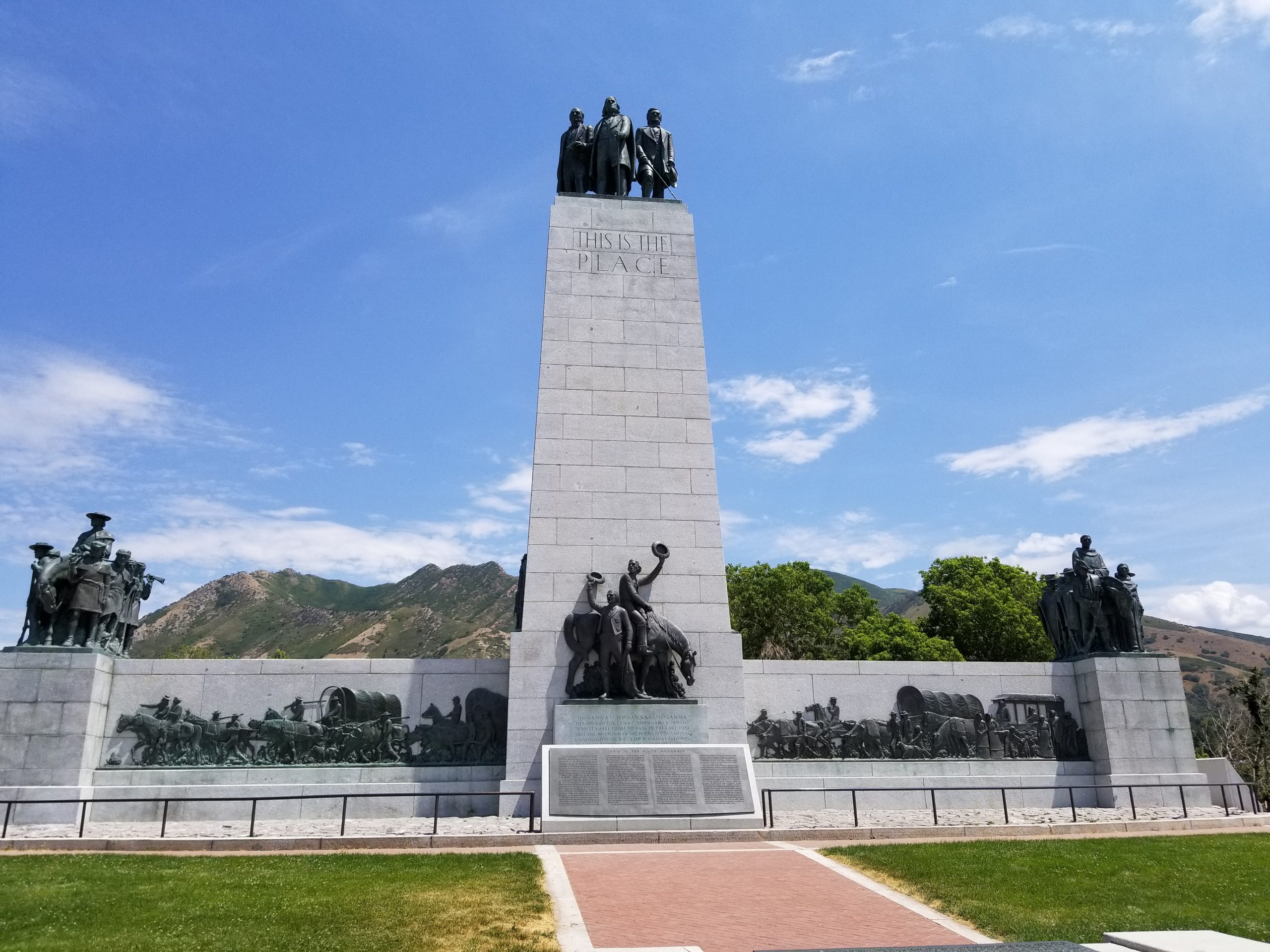Write-up by Amy Brown
Placed by the Hibernian Society of Utah on March 17, 1996 dedicated May 10, 1996
The GPS Coordinates: 41°37’03.6″N 112°33’03.0″W
Historical Marker Text: To the Irish who toiled on the Transcontinental Railroad uniting our nation
Extended Research:
In 1862 Congress passed the Pacific Railroad Act[1] providing federal land and funding for the building of a transcontinental railroad from Omaha, Nebraska to Sacramento, California. The project was an engineering feat never seen before. Construction began in 1863 and it was completed on May 10, 1869 at Promontory Point, Utah. The excitement to build a transcontinental railroad created a competition between two railroad companies. The Central Pacific Railroad built East from Sacramento, and the Union Pacific Railroad built West from Omaha, eventually meeting in Utah Territory. Upon completion, travel time across the country dropped to only seven days, a significant reduction from the four to five months it took via wagons. The transcontinental railroad also sped trade, communication, and helped to unite the nation. The building of the first transcontinental railroad required 6 years to complete and thirty-thousand workers who were primarily immigrants.[2] Without the hard work and sacrifice of both Chinese and Irish immigrants the historic completion of the transcontinental railroad would not have been possible.
The Union Pacific Railroad company employed mainly Irish immigrants who were unmarried veterans of the Civil War, both Confederate and Union, who sought opportunity and work. The work was challenging and it consisted of digging, grading, and track laying across the Great Plains for long hours at a time through challenging conditions. The style of labor was very military[3] like with project managers cursing and barking out orders which workers were expected to obey like soldiers. Workers were paid three dollars a day with food and lodging provided. They worked from sun up to sundown with only three breaks a day for meals, which included large breakfast and lunch portions and smaller dinner portions. Harsh winter storms, Indian raids on worker camps and lack of supplies such as firewood made track laying difficult and slow. The Irish workers also suffered dysentery which was a constant problem because they frequently drank impure water from springs or lakes. They were expected to lay two to three miles of track a day.[4]
Irish immigrants faced discrimination and were sometimes viewed as dirty drunks who were not afraid to go on strike. Even still the railroad companies relied on their labor and they were valued as hard workers on the railroad and good track layers. As they approached the meeting of the rails in 1869 the Central Pacific workers were able to lay ten miles of track in a single day with the help of eight Irish immigrants. It was a feat and record never seen before. After the work on the transcontinental railroad was complete many of the Irish immigrants continued to work for the railroad or found mining jobs throughout the West. This marker honors their contribution in uniting the nation as well as their work and sacrifice.

[1] Congress of the United States, The Pacific Railroad Act, (Washington D.C. 1862) https://www.ourdocuments.gov/document_data/pdf/doc_032.pdf
[2] Stephen E. Ambrose, Nothing like It in the World: The Men Who Built the Transcontinental Railroad, 1863-1869 (New York: Simon & Schuster, 2000), 17.
[3] Ryan Dearinger, The Filth of Progress (Oakland: University of California Press, 2015).
[4] Beatty, http://www.irishcentral.com/roots/genealogy/the-impact-of-the-irish-on-the-american-railwaysystem
Primary Sources:
Congress of the United States, The Pacific Railroad Act, (Washington 1862) https://www.ourdocuments.gov/document_data/pdf/doc_032.pdf
Secondary Sources:
Ambrose, Stephen E. 2000. Nothing like It in the World: The Men Who Built the Transcontinental Railroad, 1863-1869. New York: Simon & Schuster.
Dearinger, Ryan. 2015. The Filth of Progress. Oakland: University of California Press. Accessed March 29, 2017. ProQuest Ebook Central.
https://www.nps.gov/parkhistory/online_books/blm/ut/8/sec1.htm
http://www.irishcentral.com/roots/genealogy/the-impact-of-the-irish-on-the-american-railway-system


